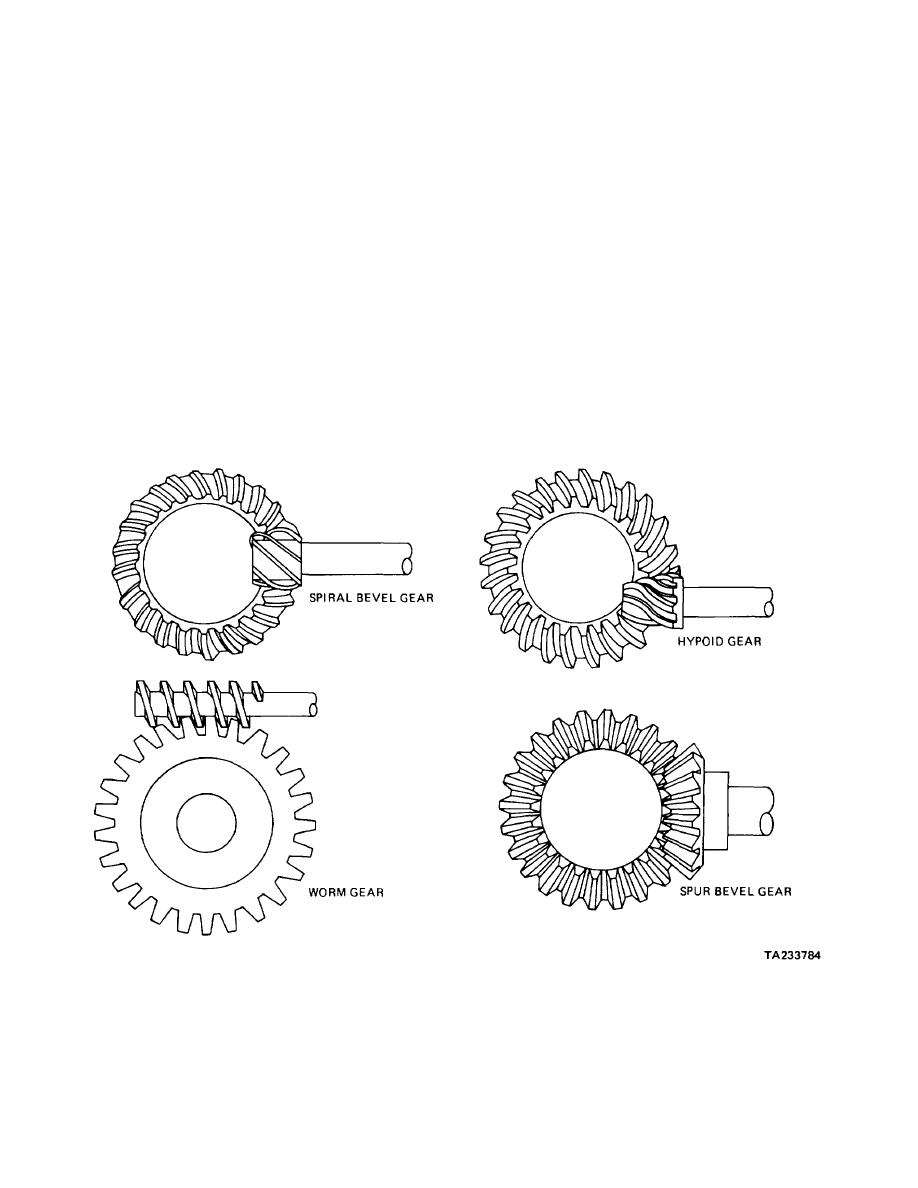
| Tweet |

Custom Search
|
|

|
||
 TM 9-8000
immediately to the opposite wheel via the cone clutches.
b. The gear ratio of the bevel gear final drive is
(4) Slippage of One Wheel in Reverse.
found by dividing the number of teeth on the bevel drive
Because the spiral grooves that are cut into the cone
gear by the number of teeth on the pinion. For a worm
clutches are directional, the cone clutch no-spin
gear, it is found by dividing the number of teeth on the
differential will not work in reverse because the cone
worm gear by the number of threads on the worm. In the
clutches will unscrew themselves from the case, causing
case of chain drives, the sprockets are considered
the no-spin feature to be inoperative.
gears, and the number of teeth on the driven sprocket is
divided by the number of teeth on the driving sprocket.
Section III. 29-8.
Overview.
29-9.
Gear Drives.
a. A final drive is that part of a power transmission
a. General (Fig. 298). All the final drives in general
system between the propeller shaft and the differential.
use are geared. The most common of these consists of
Its function is to change the direction of the power
a pair of bevel gears; that is, a drive pinion connected to
transmitted by the propeller shaft through 90 degrees to
the propeller shaft and a bevel drive gear attached to the
the driving axles. At the same time, it provides a fixed
differential case on the driving axle. These bevel gears
reduction between the speed of the propeller shaft and
may be spur, spiral-bevel, or hypoid. Spur gears have
the axle driving the wheels. In passenger cars, this
straight teeth, while spiral-bevel and hypoid
speed reduction varies from about 3:1 to 5:1. In trucks, it
varies from about 5:1 to 11:1.
Figure 29-8. Gear Drive Configurations.
29-8
|
||
 |
||